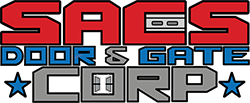Automatic gates are a great boost to your business, allowing quicker, more secure entrance and exit to your property. But that’s only when they’re working right – which, if you install a reputable brand and schedule regular maintenance, is more likely to happen. Regular gate service can extend the life of your gate opener and keep operational issues from occurring. To stay on top of maintenance, it pays to be familiar with typical automatic gate problems, such as these:
- Gate closes or opens slower than it should
- Gate stops opening or closing
- Gate’s movement is delayed
- Gate opens the wrong way
- Gate fails to open or stop where it should
- Gate opens or closes when no signal has been given
- Gate locks get jammed
- Gate beeps
- Gate fails to work unless someone stands in front of it
Typical causes of problems with your gate opener:
- Limit switches are malfunctioning
- Power supply problem
- Circuit board damage
- Damaged/broken chain
- Cold weather-affected battery or metal components
- Animal damage
- Debris or moisture in the unit
Here is a more in-depth look at some of the most common automated gate problems.
1. Your Sliding gate Doesn’t Fully Open
This can happen when the racking comes loose and isn’t connecting with the motor’s output gear. When your automatic gate is stuck you should look at the point where the rack meets the output gear and watch the gap as the gate opens. If it’s too loose; tightening or replacing the hardware that attaches the racking to the output gear may be necessary to fix it. The roots of large nearby trees may also push up concrete and move the track up, so it makes contact with the gate. Look out for natural challenges when assessing your automated gate’s struggles.
2. Your Automated Gate Opener Can Have Water Damage
Control boxes and sliding gate operators with electronic circuit boards should be sealed. Condensation can build up and damage the electronics inside. Electronics should also be kept above running or spraying water. It is important to regularly check the control box and sliding gate operator for signs of water damage, such as rust or corrosion. If any damage is found, it is important to take action immediately to repair or replace the damaged components.
3. Powered Gate Motors Still Can Break Down
If the motor isn’t powerful enough to move the gate, it will break down frequently and end up costing more than a suitably-sized motor would have. Also, if the gate is likely to encounter adverse weather like wind resistance, the motor should be powerful enough to overcome it. If the gate is large and heavy, or if it is in an area with high wind speeds, a more powerful motor will be required to overcome the resistance. If the gate is small and lightweight, or if it is in a protected area, a smaller and less powerful motor may be sufficient. If you’re unsure of your door/area’s requirements, be sure to contact a professional for a consultation.
4. Cable Placement is Just as Important as The Gate Installation
Buried cable should be installed in a conduit and should rated for direct burial. It should also be flexible when it runs to a device that moves like an automatic gate actuator or electric lock or swing gate. Never bury flex cable in the ground – it will rot. Run flex cable to a waterproof junction box, then join it to a cable suitable for burying. Do not join cable in the ground unless the electrical pit is well drained. Use gel-filled connectors, and take measures to protect the connections from the elements.
5. The Gate’s Control Box Can Be Infested with Insects
Seal the control box tightly with silicone to keep all creatures – especially ants – out. This can be done by applying a bead of silicone around the edges of the control box and making sure that all gaps and cracks are sealed. You may need to place moth balls or ant bait in the control box to deter insects and ants. Use moth balls sparingly, as they can be corrosive.
6. A Commercial Gate’s Posts Move Over Time
Gate posts can move due to underground moisture and tree roots. Also, a post not buried deeply enough can move and cause the gate to drag. Hinges and post should be strong enough to support the gate. Gate posts may also move from the ground settling. Another problem caused by moving gate posts is the electric strike lock may jam. Posts may need to be removed and new ones installed that won’t move so much – another job for an experienced gate service technician. For strike lock problems, a magnetic clamp may need to replace the strike lock.
You may be able to solve some of these problems easily by eliminating possible causes and testing the gate until it works properly. But if you don’t get quick results, you’re better off calling your local automatic gate system repair company.
